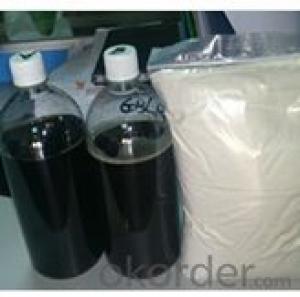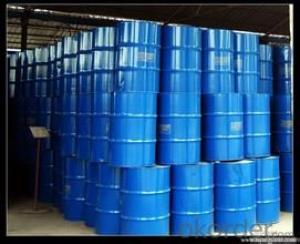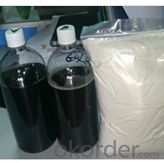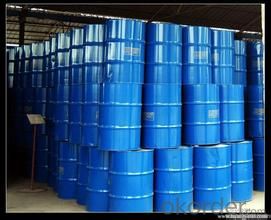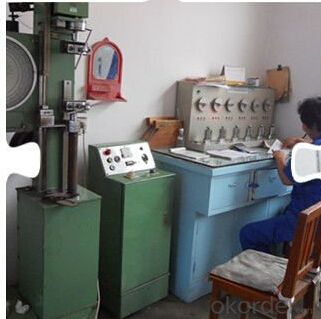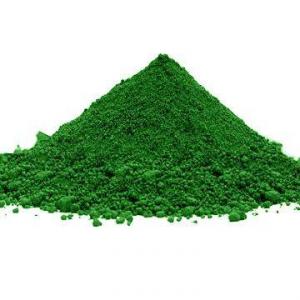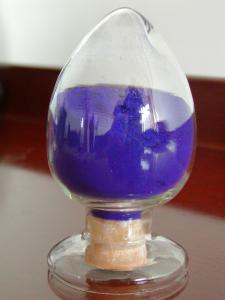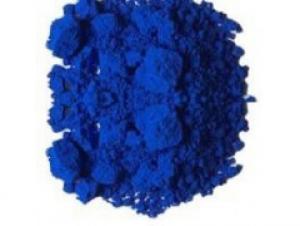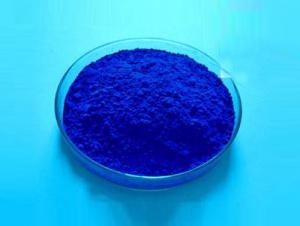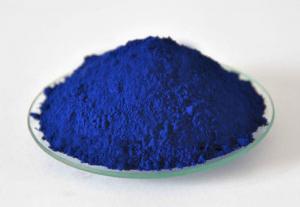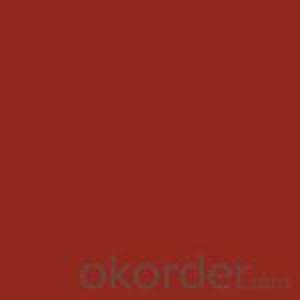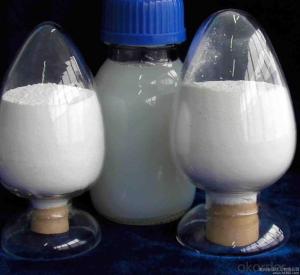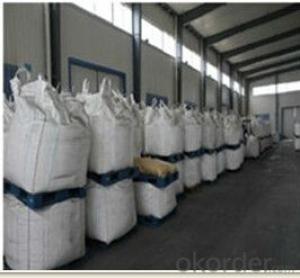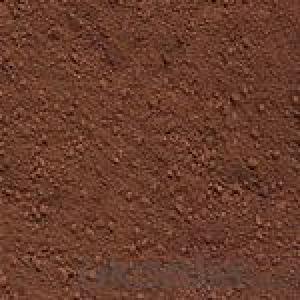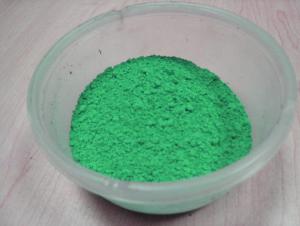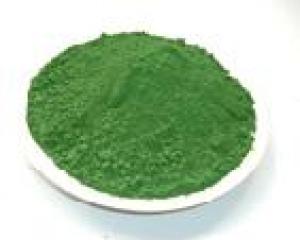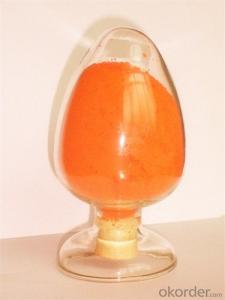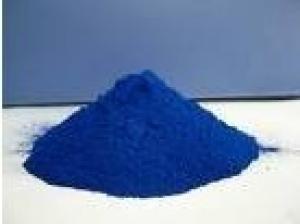Textile auxiliary, Textile chemical biopolishing Acid Cellulase Enzyme
- Loading Port:
- Shanghai
- Payment Terms:
- TT OR LC
- Min Order Qty:
- 1 bottle
- Supply Capability:
- 10000 bottle/month
OKorder Service Pledge
OKorder Financial Service
You Might Also Like
Quick Details
| Classification: | Chemical Auxiliary Agent | CAS No.: | Chemical Auxiliary Agent | Other Names: | acidic enzyme water |
| Place of Origin: | Guangdong China (Mainland) | Type: | Chemical Auxiliary Agent | Usage: | Textile Auxiliary Agents |
| Brand Name: | DEROU | Model Number: | GGL acidic Enzyme | Appearance: | Amber liquid |
| PH Value: | 4.0-5.0 | GGL dosage: | 0.3-1.5% (O.W.F) |
Packaging & Delivery
| Packaging Detail: | 25kg or 200kg per plastic drum. |
| Delivery Detail: | 3-7 days |
Specifications
acid cellulase for biopolishing
concentrated cellulase for textile bio-polishing
high quality and perfect service
Fast remove cowboy hair Natural Cellulase Enzyme GGL
1.Fabric bio-polishing finishing acidic enzymes water
2.For cotton, cotton / polyester blended fabric bio-polishing finishing
[Description]:
GGL is a new generation of non pathogenic bacteria deep fermentation of a high quality, highly concentrated cellulase suitable for complex products with different biological polished style for cotton, cotton/polyester blended fabric bio-polishing finishing, but also for washing factory and dyeing factory direct.
GGL belongs to the genetic modification of acid cellulase, available in PH-5.5-7.0 conditions, anti-back of its outstanding advantages of excellent dyeability, and therefore particularly suitable for denim washing. Its anti-the back stick performance is the best in the similar acidic cellulase.
[Specification]:
Appearance: Amber liquid
PH Value: 4.0-5.0
Vitality:≥13000 CMCU/mL
Compatibility: This product to the buffering agent, non-ionic surface active agent has a good compatibility.
[Direction for Usage]:
GGL dosage: 0.3-1.5% (O.W.F)
Bath ratio: 1:8-1:20
Processing time: 30-60minutes
Temperature: 45-55°C
PH Value: 4.5-5.5
[Properties]:
→ GGL suitable for cellulose fabric biopolishing finishing, the fabric surface clean, clean lines, greatly reducing pilling rates, effectively improve the fabric handle.
→ GGL according to the requirements of customers can produce different stone apparent effect, giving unique fermented wash denim fabric style.
→ Less strength loss, and good color, back contamination and cross color can be small, minimal lower shade changes.
[Inactivated]:
Treatment effect is reached must be inactivated. Can through the addition of anhydrous sodium carbonate will increase PH value of 10, or up to 70°C, with 10 minutes.
[Storage & Package]:
Can be stored for 6 months at 0-25°C in a sealed container, keep dry and avoid exposure to sunshine.
25kg or 200kg per plastic drum.
- Q: What are MAC eyeshadow pigments? Are they just like regular eyeshadow.. are they used the same way? Has anyone tried them and liked them?
- there just loose eyeshadows, yes they are like regular eyeshadow, i like them but they can be messy
- Q: Is gel food coloring a pigment or a dye?
- Dyes contain pigments, my friend. What is a pigment? They are like little beads. Very very tiny beads of the same color. Then if you spread these out, they give the thing a color. For example, the little green beads in leaves give it a green color. Pigment in our hair gives it a blonde/auburn/brown/black color. What is a dye? A dye is a liquid made up of water and pigments. The pigments are dissolved in water (well not really dissolve just that you cant see the beads) so that it's easier for us to use it. Everything that has a color is made up of pigments. So, gel food coloring is a thicker version of a dye that contains pigments.
- Q: what are the differences between colorfast and non colorfast pigments?
- Pigments, are generally solids and are usually insoluble in the medium in which the pigment is being used. Pigments, are typically used instead of dyes in applications where color migration or bleeding is undesirable. One possible approach to create a colorfast pigment for use in something like toothpaste would be in a layered anion exchange material which is contacted with the dye under conditions in which a water-insoluble pigment is obtained. The water soluble dye and the layered anion exchange material would normally be contacted together in a liquid medium in which the dye has been dissolved. The layered anion exchange material is preferably a layered aluminate of some kind. Generally, pigments are graded by international standards for color fastness. Eight is the most color fast, and anything over six will do quite well out-of-doors. As ancient Frescoes, sand paintings, petroglyphs and other pure-pigment art demonstrate, certain pigments can remain in direct sunlight for thousands of years without any indication of fading. These pigments are earth, metal, and chemical colors that are neither dyes nor tints. Dyes and tints, such as alizarin crimson, berry juice, etc. will bleach quickly due to ultraviolet exposure that occurs in direct or indirect sunlight. Today most paints are derived from much different sources than they were as recently as fifty years ago. Real cadmium, cobalt, copper oxide, to name a few, are no longer used. They are now formulated to appear similar to the traditional pigments. They may be extended out with white, resulting in an appearance that can differ with traditional counterparts. For the most part these new colors are very colorfast and without the addition of medium or varnish they will not fade when left in direct sunlight.
- Q: Compare and contrast pigment color with the color seen from a light. What is the difference between mixing pigment colors and mixing light colors?
- Pigments are chemicals that selectively absorb and reflect different spectra of light. When a surface is painted with a pigment, light hitting the surface is reflected, minus some wavelengths. This subtraction of wavelengths produces the appearance of different colors. Most paints are a blend of several chemical pigments, intended to produce a reflection of a given color. Mixing pigments is subtractive. Mixing light is additive. Let's take the primary pigments, red, blue and yellow. Red pigment is red because the chemical it is made of absorbs (subtracts) blue and yellow light that falls on it and reflects only red light to your eye. Similarly, blue pigment is blue because it absorbs red and yellow light and reflects only blue. So when you mix the three primary pigments together, you produce something that absorbs all of the light falling on it in equal amounts and reflects nothing to your eye. Thus, it appears black. In contrast, when you mix only red and blue light, there isn't any yellow in it, so the resulting light appears purple (the complement of yellow). Likewise, if you mix red and yellow light it appears orange (the complement of blue). If you mix all three colors of light together (in equal amounts), the resulting light appears white because it contains all of the colors of the spectrum. This explanation is sound, although greatly simplified. The two summaries above are not my own, nor do I claim them as mine.
- Q: wut is the diff between those 2?
- pigments are loose powder and they stay for longer even the colour looks brighter than eyeshadows.
- Q: explain how the pigments in colored objects such as clothes differ from plant pigments
- Green pigments absorb light in the red and blue parts of the spectrum and reflect the green back to our eyes. The major functional difference between chlorophyll and say jade green is that only the chlorophyll in living systems can transfer the absorbed light energy and the excited electron to another molecule, thus trapping it. In biology, pigment is any material resulting in color in plant or animal cells which is the result of selective absorption. Some biological material has so-called structural color, which is the result of selective reflection or iridescence, usually done with multilayer structures. Unlike structural color, pigment color is the same for all viewing angles. Nearly all types of cells, such as skin, eyes, fur and hair contain pigment. Butterfly wings typically contain structural color, although many of them contain pigment as well. Creatures that have deficient pigmentation are called albinos. In the coloring of paint, ink, plastic, fabric and other material, a pigment is a dry colorant, usually an insoluble powder. There are both natural and synthetic pigments, both organic and inorganic ones. Pigments work by selectively absorbing some parts of the visible spectrum (see light) whilst reflecting others. A distinction is usually made between a pigment, which is insoluble, and a dye, which is either a liquid, or is soluble. There is no well-defined dividing line between pigments and dyes, however, and some coloring agents are used as both pigments and dyes. In some cases, a pigment will be made by precipitating a soluble dye with a metallic salt. The resulting pigment is called a lake.
- Q: what roles do pigments have in energy transfer?
- Pigments okorder /... When a photon of just the right amount of energy strikes an electron resonating in the pigment, the electron can absorb the photon and get promoted to a higher quantum level. The photon must have just the exact amount of energy to boost the electron from its current level to its new level or it cannot be absorbed. If the incoming photon is just right to promote an electron, in that pigment, the newly energized electron resonates along the bonds at the higher energy level where it can pass to the photosynthetic reaction center from the pigment array, to split water and take back an electron. Meanwhile the chlorophyll's electron passes to the electron transport chain to begin oxidative phophorylation.
- Q: I was intrested in buying some pigments on ebay but they dont say the name they just say these nubers #68 #69 #93 do u no what pigment name they are u could serch it that might help thank you
- there's okorder / i couldnt find the numbers you're better off going to the store and asking
- Q: HW HELP THIS IS COMLPCATED
- There are carotinoids there too. The yellow, orange and red we see in leaves before they drop. Masked by chlorophyll until that production stops.
- Q: So i'm writing up a lab report and i'm just a little confused on why scarlet, rosy, cinnabar and vermillion mutants contain the same kinds and amounts of pigments found in wild-type according to paper chromatography. Since they're mutants shouldn't it be different? I don't understand how i'm going to explain that they are mutants when it appears that they have the same phenotype as wild-type. Thank you so much for your help!
- Man pigments determine the colour of the eye. If the composition of pigments is same in all the flies,how can the colour in which their eyes look differ?isn't this a contradiction?i suspect the accuracy of The chromatography test because even a very very slight change in the amount of pigment can significantly change the colour. The phenotype is always different in mutants due to different genotype. in genotype is taken for granted if a change in phenotype is present. Wait just got over into a nice point. Sometimes even if the pigment composition being same different colours m8 be produced due to different allotropes or iro of the same pigment might have different colours!though allotropes(not isomers) have same composition but differ in,their post translational changes r different.since post translational changes r indirectly influenced by genes.this completely explains this case.
Send your message to us
Textile auxiliary, Textile chemical biopolishing Acid Cellulase Enzyme
- Loading Port:
- Shanghai
- Payment Terms:
- TT OR LC
- Min Order Qty:
- 1 bottle
- Supply Capability:
- 10000 bottle/month
OKorder Service Pledge
OKorder Financial Service
Similar products
Hot products
Hot Searches
Related keywords
